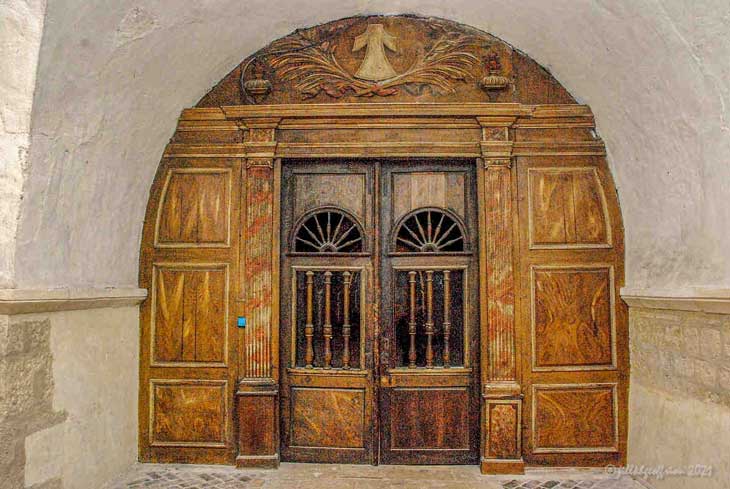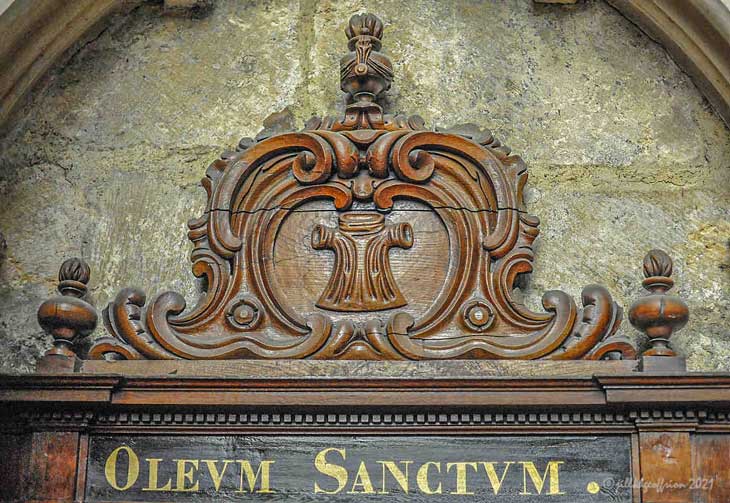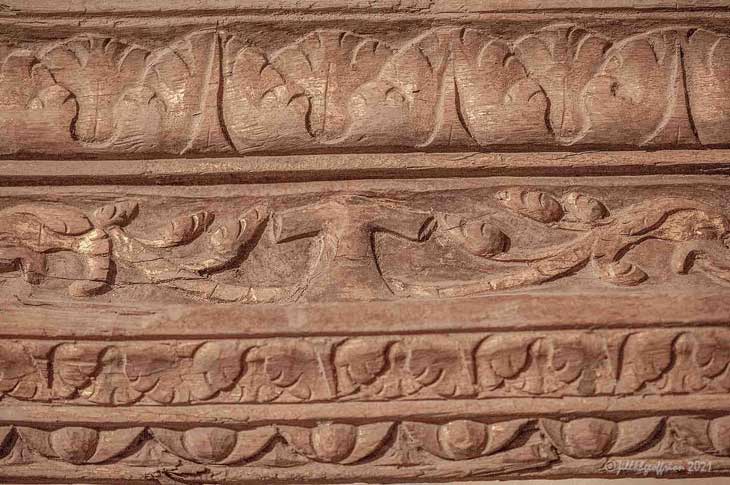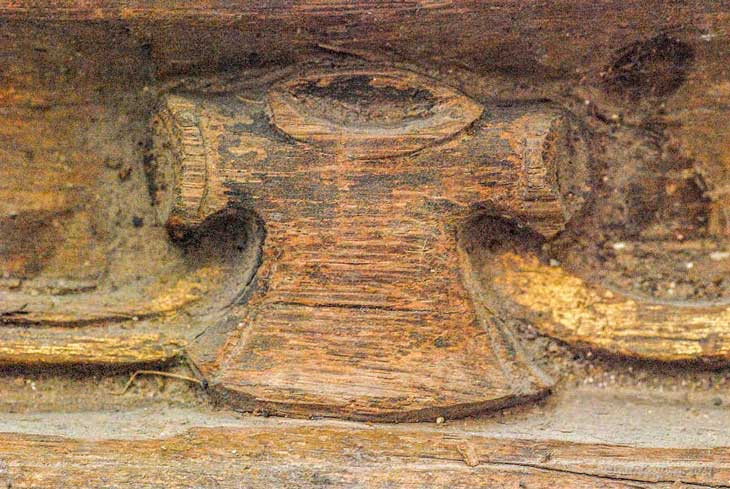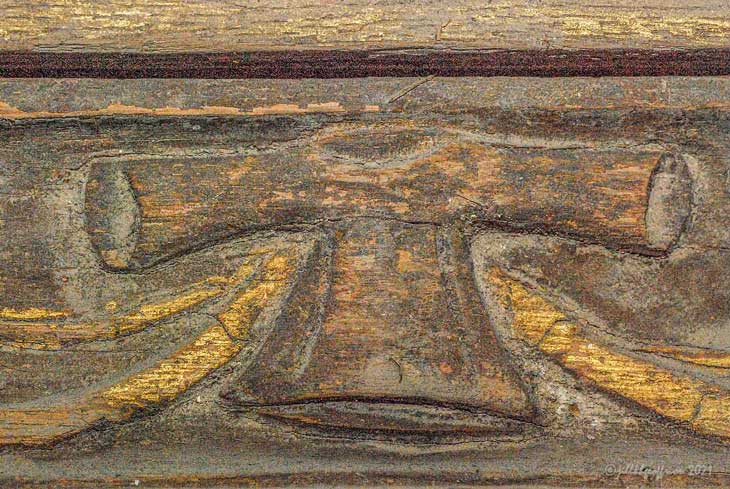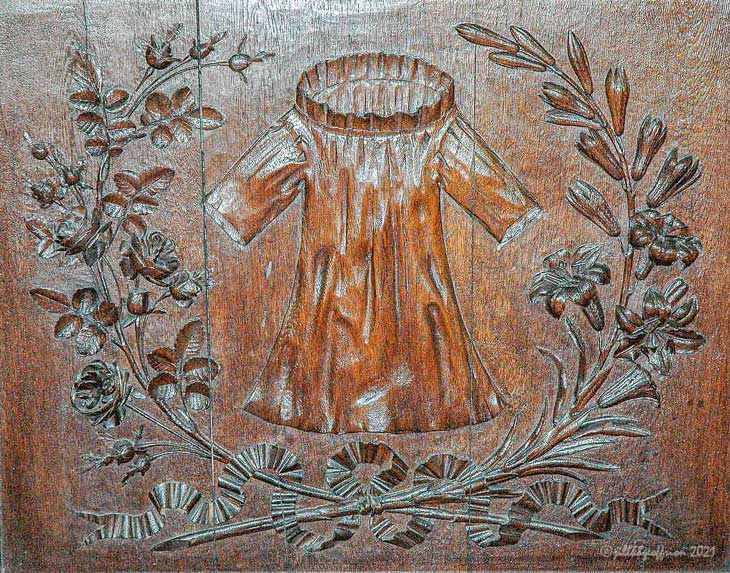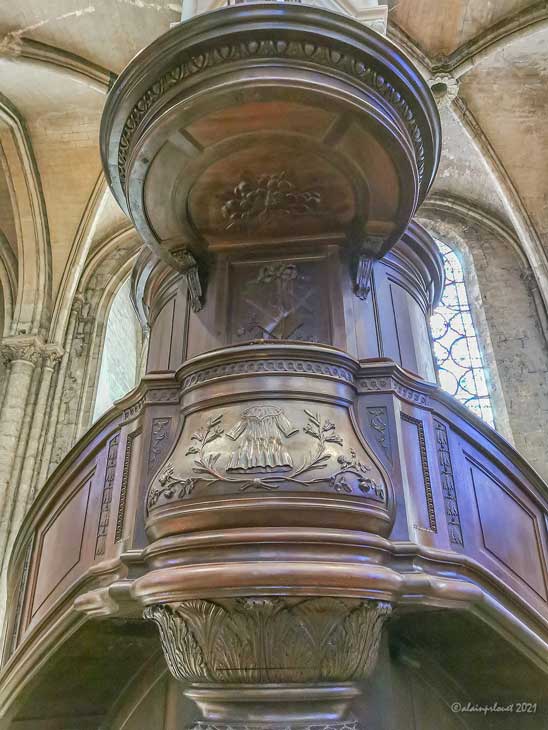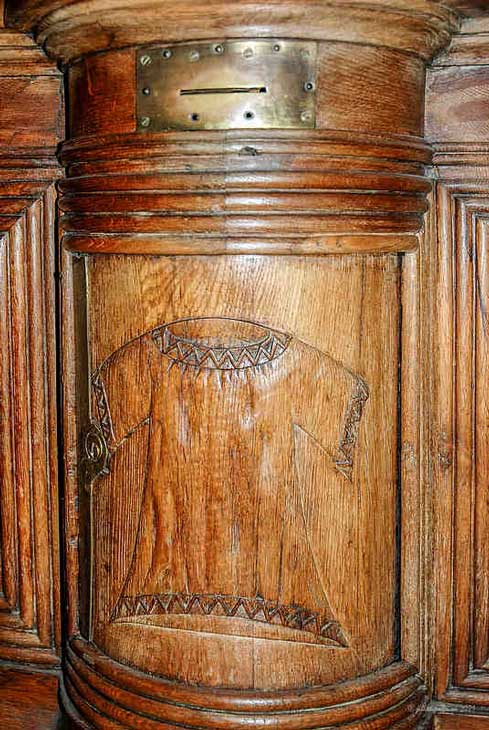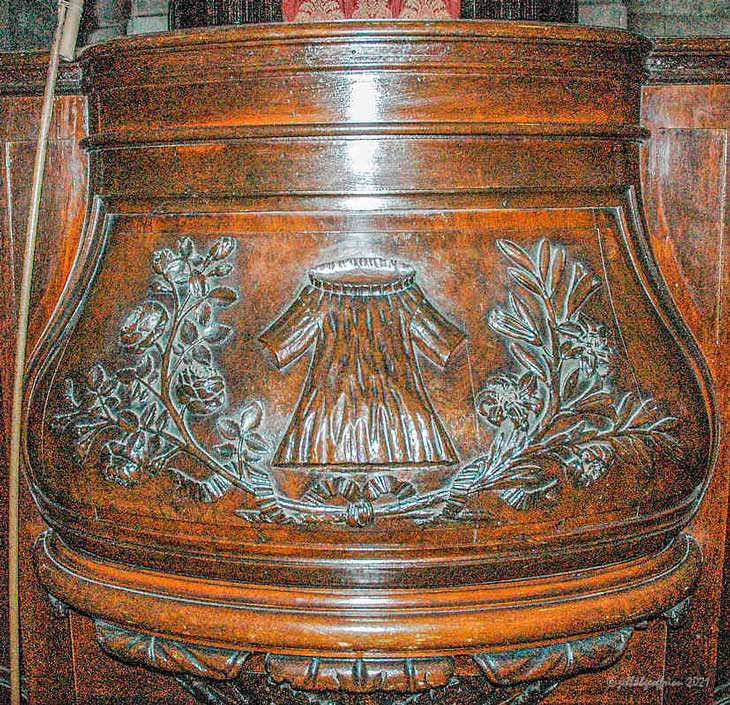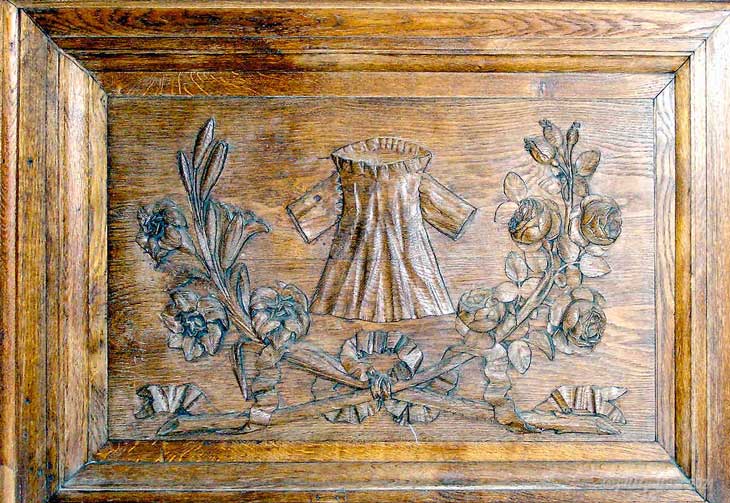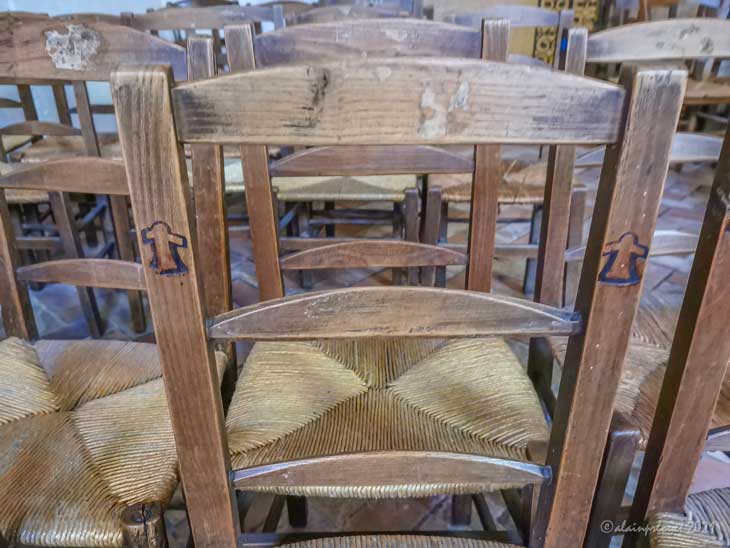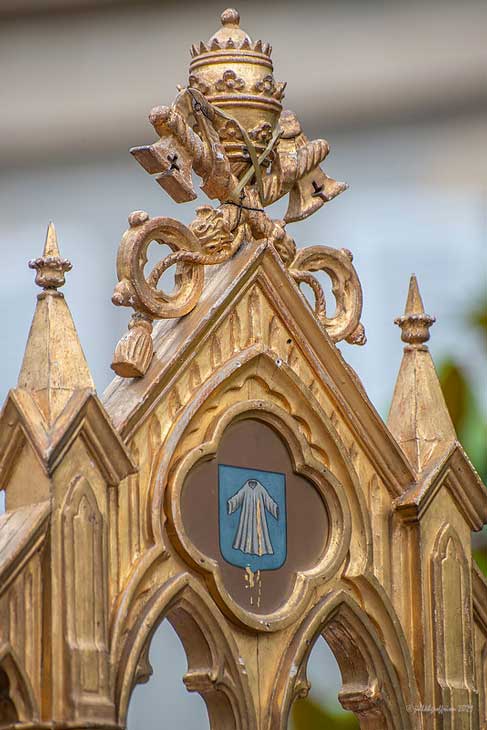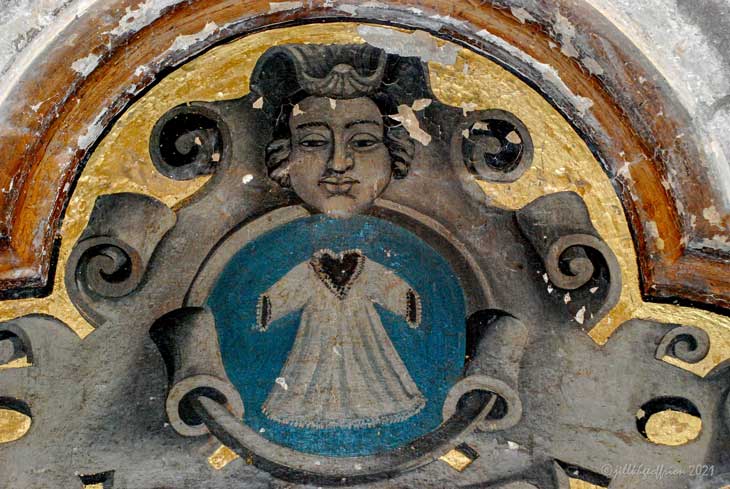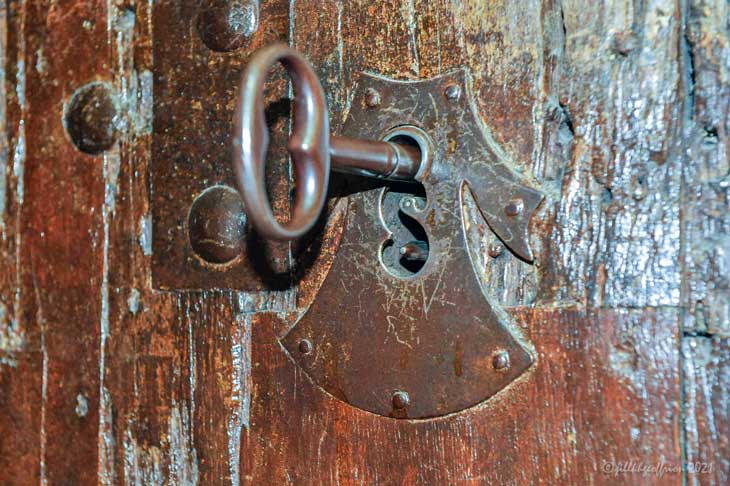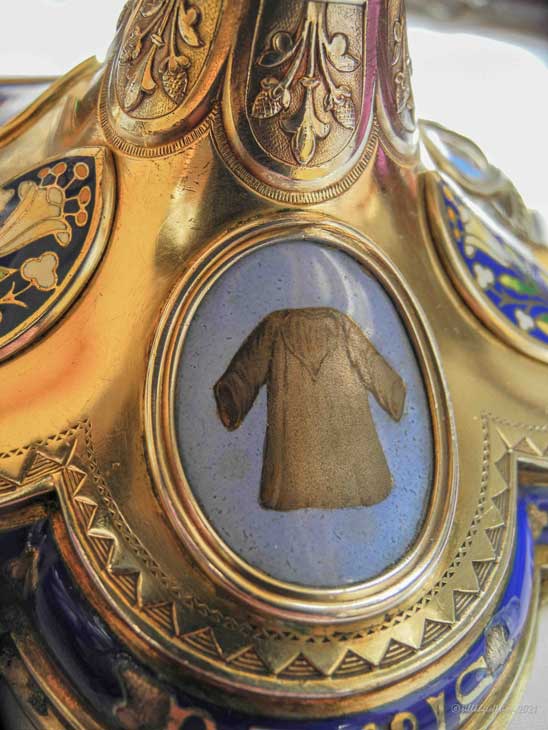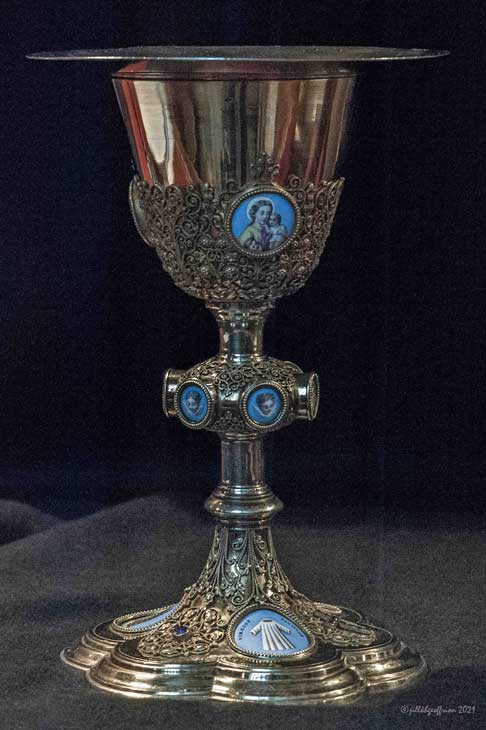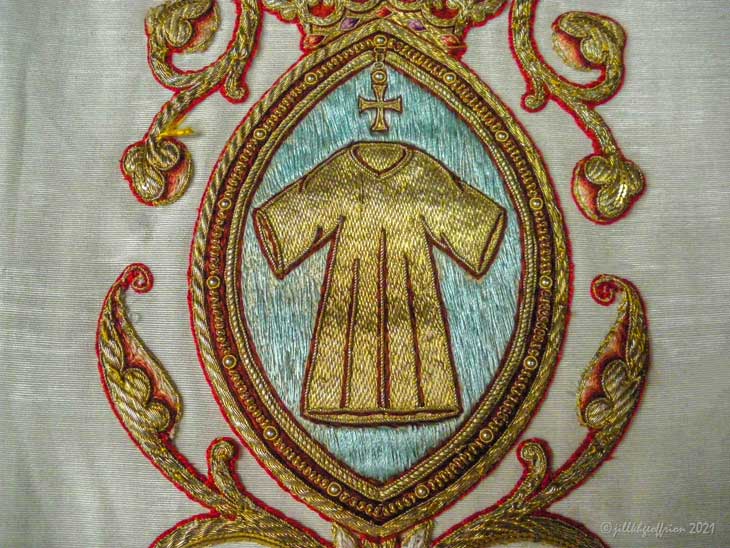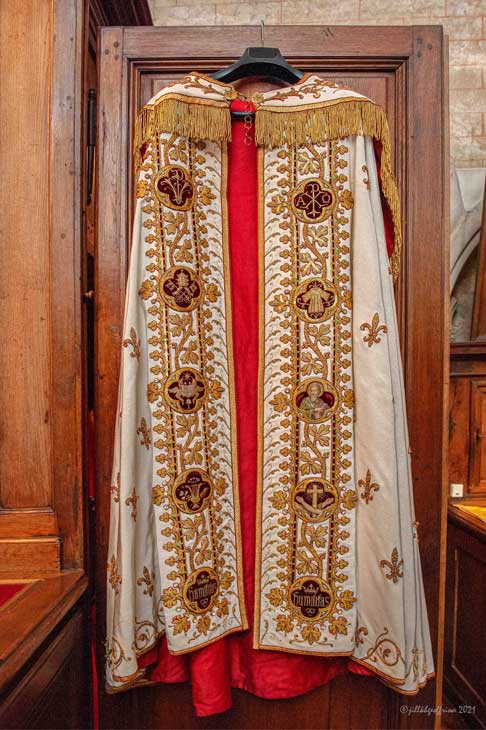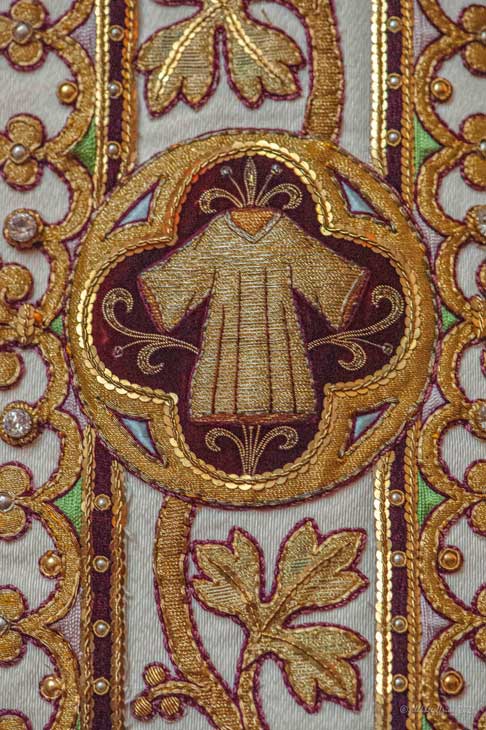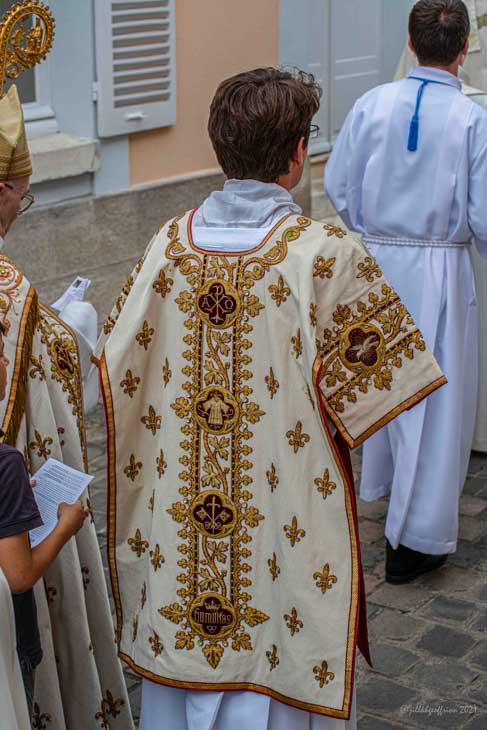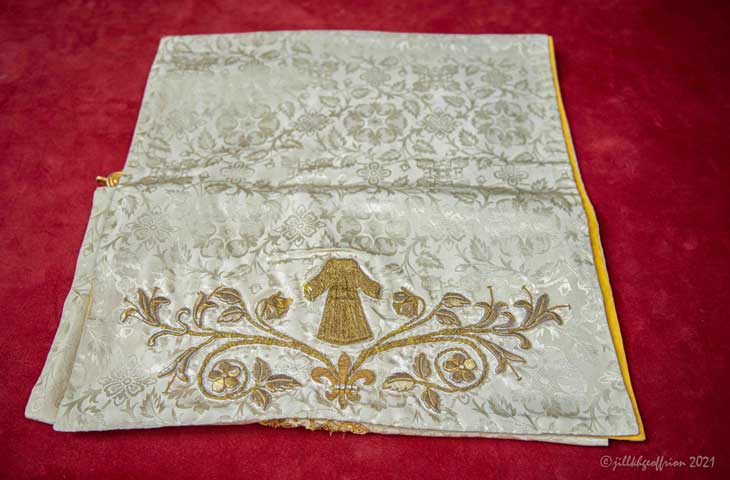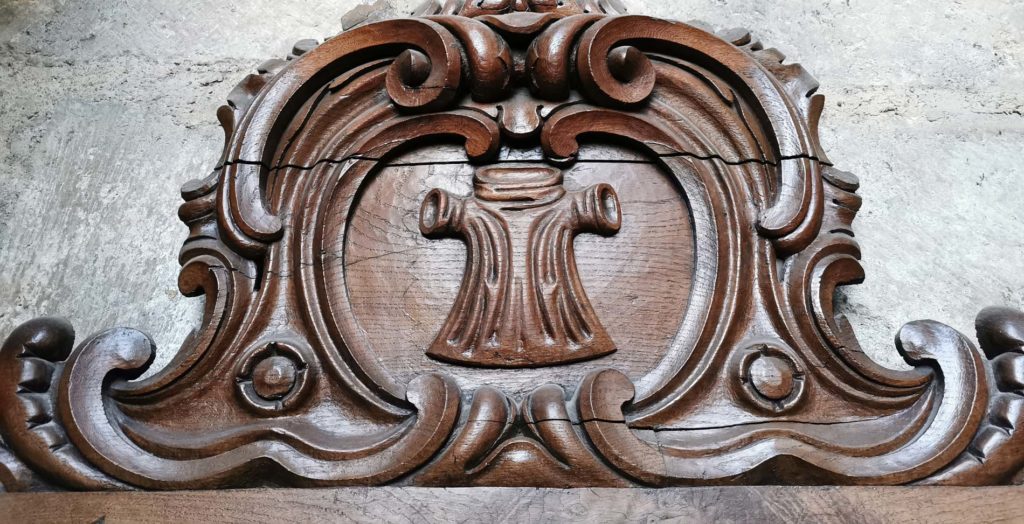
Pilgrims and parishioners sometimes notice symbols of a tunic or shirt as they visit and pray in the cathedral. There are, in fact, many shirts that can be found all over the church, almost one hundred and fifty! Some are made of wood, some are sculpted in stone, others are painted or found in stained-glass windows. Often these shirts are thought simply to be a symbol of the major relic of the cathedral, the Veil of Mary. While they do represent this veil, given by Charles the Bald to the cathedral of Chartres in 876, they also have another symbolic significance that has not always been appreciated.
When one considers the number of tunics that can be found in the cathedral as well as the precise locations where these shirts are found, their meaning becomes clearer. It is worth noting that these shirts are found above or on the side of doors, as a part of several of the important keyholes of the building, and on the pulpits in the choir and the nave. Rather than pointing directly to Mary, these representations of her veil bring into focus the tradition, property, and great power of those who served in this cathedral, the Chapter of the Cathedral of Chartres and its canons.
The chapter, for many centuries, was one of the most significant in France. Symbolically comprised of seventy-two canons, the chapter was responsible for the well-being of everything that related to the cathedral until 1790. During the French Revolution that privilege was stripped from it until in 1821, when Monseigneur de Latil and 14 canons once again took the reins (2).
The Chapter of Chartres, beginning in the Middle Ages adopted for their seal the theme of the Annunciation featuring Gabriel and Mary. In 1450 they replaced the Annunciation with the Tunic of the Virgin, represented as a small shirt. Régnault de Paris, canon and chefcief (the priest responsible for the wax needed for the cathedral) was one of the first clerics at Chartres to adapt this new symbol.
After many years of study, we are pleased to share some of the fruit of our inquiry related to this symbol which can be found throughout the cathedral. Be on the lookout for this symbol sculpted in stone and wood, placed in the stained-glass windows, and painted in various locations. Don’t forget to look for the tunic symbol on items related to liturgical functions in this particular cathedral, for example, on chalices, ciborium, chasubles, and dalmatics (3).
We hope to have conveyed the significance of these symbolic shirts as ubiquitous reminders of the omnipresence of the chapter which has been the faithful guardian of Chartrain traditions.
Alain Pierre Louët (5) & Jill Kimberly Hartwell Geoffrion (6)
Please consider the following examples (4) :
1/ The Holly Tunic sculpted in wood :
2/ The Holy Tunic in the Sacristy :
1/ Even though the possessions of the Chapter of the Chartres Cathedral were numerous in the diocese and beyond, and even though their seal can be found in many different locations related to the chapter, we limited our study to the cathedral location where we found almost 150 examples of the tunic.
2/ fter these events, fourteen pectoral crosses were created for the new canons. The first was gilded silver with two painted enamel medallions. The other thirteen were made of gilded metal. All of them have a representation of a Virgin and Child on one side, with a tunic on the other. These pectoral crosses are still used by the canons of the cathedral.
3/ For information about these objects and their dates, the internet site of Palissy can be used.
4/ These examples are merely a sampling.
5/ to contact A. Louët
6/ to contact J. Geoffrion
7/ For the history of the Beam of Glory see La monographie de la cathédrale de Chartres by Marcel Joseph Bulteau (Troisième volume de l’Edition 1901, pages 89 et 90).
